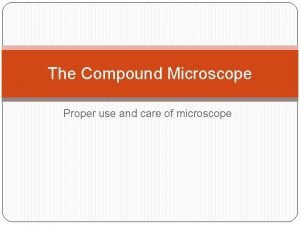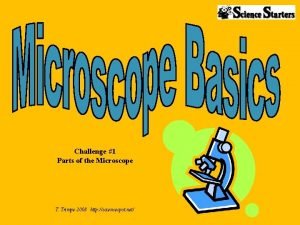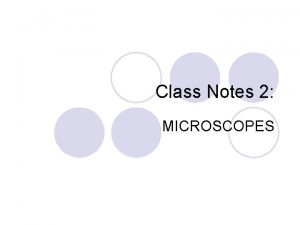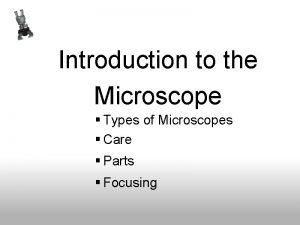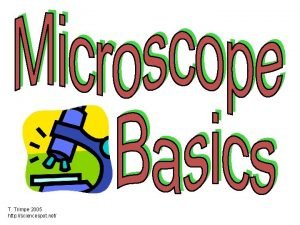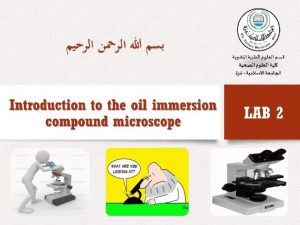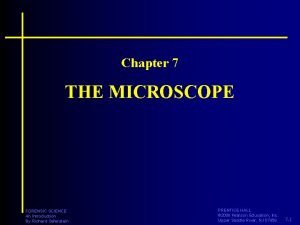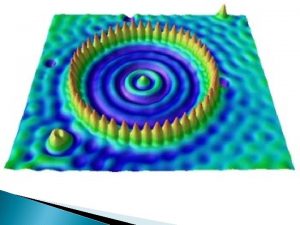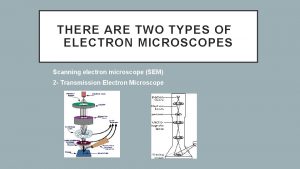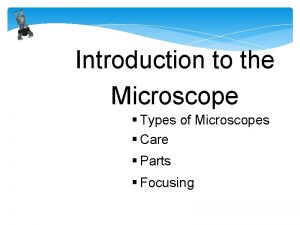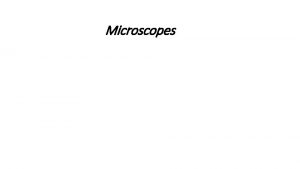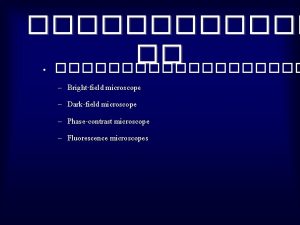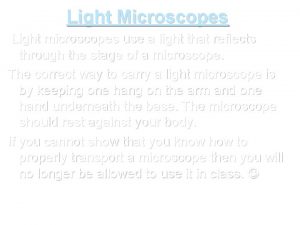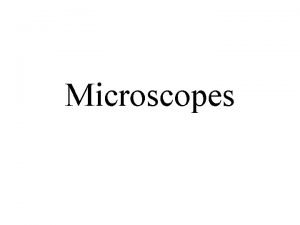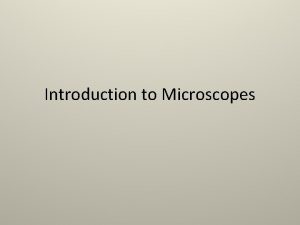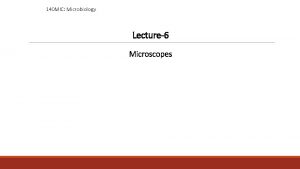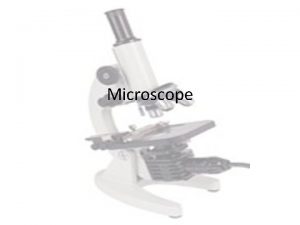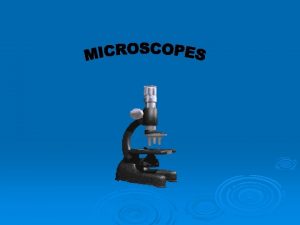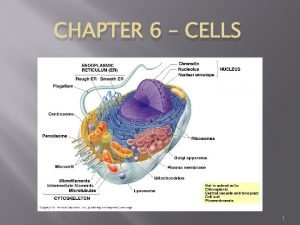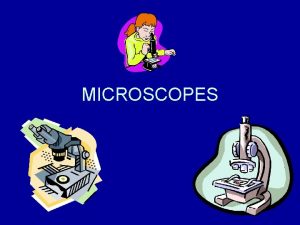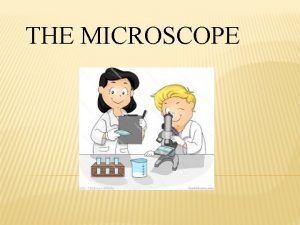Class Notes 2 MICROSCOPES I The Light Microscope














- Slides: 14

Class Notes 2: MICROSCOPES

I. The Light Microscope l A. Microscopes enabled scientist to view and study the cell. 1. Anton van Leeuwenhoek in the 1600’s used a simple light microscope. It contained one lens and light to view objects.

l B. The compound light microscope was later invented 1. It uses series of lenses to magnify objects 2. It magnified up to 1500 times.

II. Electron Microscope A. A new type of microscope was developed called the electron microscope. 1. A beam of electrons instead of light to magnify objects up to 1 million times their actual size. 2. These microscopes can show the arrangement of atoms in a molecule. l

III. Parts of Compound Light Microscope 1. eyepiece 2. Course adjustment 3. Nosepiece 4. Objectives 5. Stage 6. Diaphragm 7. Light 8. Stage Clip 9. base 10. Arm 11. Fine adjustment 12. Body Tube

l 1. Ocular lens or eyepiece: 10 x magnification. l 2. Course Adjustment: Located on side of microscope; innermost is the fine focus and outermost is the coarse focus. l 3. Nosepiece: holds the objective lenses, rotates.

l 4. Objective lenses: 3 on our scopes, 4 x, 10 x, 40 x Total magnification = ocular power x objective power. l 5. Stage: platform on which slides are mounted for viewing l 6. Diaphragm: controls the amount of light which passes to the specimen and can drastically affect the focus of the image.

l 7. Light: Don’t forget to turn it on or off! l 8. Stage Clip: Holds the slide steady l 9. Base: Keeps the scope from tipping over l 10. Arm: connects the parts of the scope

l 11. Fine adjustment: small knob on top of big knob. l 12. Body tube: contains mirrors and prisms which direct the image to the ocular lens.

IV. Care and Handling of the Compound Microscope l There are only a few ABSOLUTE rules to observe in caring for the microscopes you will use. Taken care of, these instruments will last many years and continue to work well. Please report any malfunctions immediately to your instructor.

Precautions l 1. ALWAYS use two hands to carry the scope - one on the arm and one under the base - NO EXCEPTIONS! NEVER carry the scope upside down, for the ocular can and will fall out.

l 2. Always use the proper focusing technique to avoid ramming the objective lens into a slide - this can break the objective lens and/or ruin an expensive slide.

l 3. Always turn off the light when not using the scope. l 4. Always carefully place the wire out of harm's way. Wires looped in the leg spaces invite a major microscope disaster. Try sliding the wire down through the drawer handles beside your bench space.

l 5. Wrap cord around microscope and place in cabinet when finished
 Calculating total magnification
Calculating total magnification Light microscope vs electron microscope
Light microscope vs electron microscope Microscope mania compound light microscope
Microscope mania compound light microscope Parts of a light microscope
Parts of a light microscope Light light light chapter 23
Light light light chapter 23 Into the light chapter 22
Into the light chapter 22 Light light light chapter 22
Light light light chapter 22 Types of microscope
Types of microscope Microscopes brainpop quiz answers
Microscopes brainpop quiz answers The purpose of a microscope
The purpose of a microscope Forensic science microscopes
Forensic science microscopes Which of the following enclose their dna in a nucleus
Which of the following enclose their dna in a nucleus Electron microscopes main idea
Electron microscopes main idea Types of electron microscope
Types of electron microscope When focusing a specimen you should always start with the
When focusing a specimen you should always start with the
